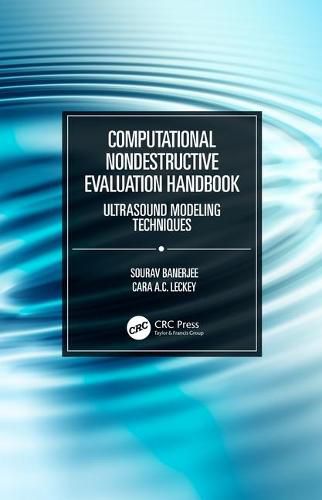Readings Newsletter
Become a Readings Member to make your shopping experience even easier.
Sign in or sign up for free!
You’re not far away from qualifying for FREE standard shipping within Australia
You’ve qualified for FREE standard shipping within Australia
The cart is loading…






Introducing computational wave propagation methods developed over 40 years of research, this comprehensive book offers a computational approach to NDE of isotropic, anisotropic, and functionally graded materials. It discusses recent methods to enable enhanced computational efficiency for anisotropic materials. It offers an overview of the need for and uses of NDE simulation. The content provides a basic understanding of ultrasonic wave propagation through continuum mechanics and detailed discussions on the mathematical techniques of six computational methods to simulate NDE experiments. In this book, the pros and cons of each individual method are discussed and guidelines for selecting specific simulation methods for specific NDE scenarios are offered.
Covers ultrasonic CNDE fundamentals to provide understanding of NDE simulation methods
Offers a catalog of effective CNDE methods to evaluate and compare
Provides exercises on real-life NDE problems with mathematical steps
Discusses CNDE for common material types, including isotropic, anisotropic, and functionally graded materials
Presents readers with practical knowledge on ultrasonic CNDE methods
This work is an invaluable resource for researchers, advanced students, and industry professionals across materials, mechanical, civil, and aerospace engineering, and anyone seeking to enhance their understanding of computational approaches for advanced material evaluation methods.
$9.00 standard shipping within Australia
FREE standard shipping within Australia for orders over $100.00
Express & International shipping calculated at checkout
Introducing computational wave propagation methods developed over 40 years of research, this comprehensive book offers a computational approach to NDE of isotropic, anisotropic, and functionally graded materials. It discusses recent methods to enable enhanced computational efficiency for anisotropic materials. It offers an overview of the need for and uses of NDE simulation. The content provides a basic understanding of ultrasonic wave propagation through continuum mechanics and detailed discussions on the mathematical techniques of six computational methods to simulate NDE experiments. In this book, the pros and cons of each individual method are discussed and guidelines for selecting specific simulation methods for specific NDE scenarios are offered.
Covers ultrasonic CNDE fundamentals to provide understanding of NDE simulation methods
Offers a catalog of effective CNDE methods to evaluate and compare
Provides exercises on real-life NDE problems with mathematical steps
Discusses CNDE for common material types, including isotropic, anisotropic, and functionally graded materials
Presents readers with practical knowledge on ultrasonic CNDE methods
This work is an invaluable resource for researchers, advanced students, and industry professionals across materials, mechanical, civil, and aerospace engineering, and anyone seeking to enhance their understanding of computational approaches for advanced material evaluation methods.